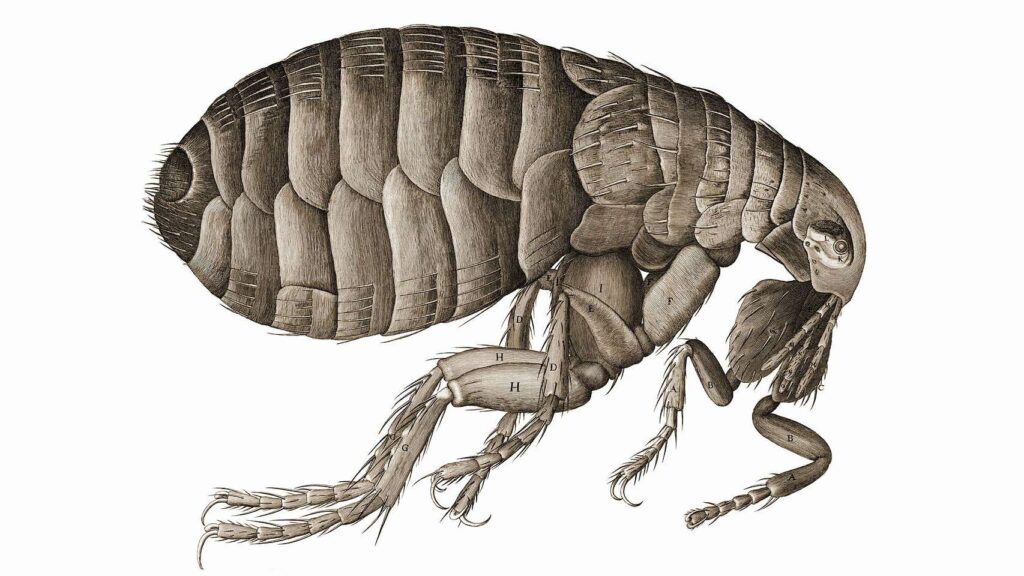Flea Identification

Fleas are small, wingless, blood-sucking parasites that belong to the order Siphonaptera. Known for their irritating bites and the diseases they can transmit, these pests can infest homes and outdoor spaces, causing discomfort to both pets and people. Proper identification and control measures are crucial for effective flea management.
Appearance
Fleas are typically 1/16 to 1/8-inch in size and brown in color. They have slender, flat bodies that allow them to move easily through an animal’s fur. These pests are known for their impressive jumping ability, leaping up to 7-8 inches vertically and 14-16 inches horizontally.
Fleas and Disease
Historically, fleas played a major role in spreading bubonic plague (also known as the “Black Death”), which devastated populations in Europe and Asia. The plague is caused by the bacterium Yersinia pestis, which is transmitted by the Oriental rat flea. Today, this disease still exists in some parts of the world, including California, where it is primarily found in wild rodents like ground squirrels. Fleas also transmit typhus fever, though this is more common in other countries.
To deepen your understanding of fleas and the diseases they can spread, visit the CDC’s webpage
General Characteristics of Fleas
Fleas are small, brown to black insects that feed on blood. They use their siphon-like mouthparts to pierce the skin of their hosts and suck blood. They are highly adapted for living on mammals, with backward-facing spines that help them move through fur. Their presence is often linked to pets such as dogs and cats, but wild animals can also introduce these pests into homes.
Life Cycle
Fleas undergo complete metamorphosis, progressing through four stages: egg, larvae, pupae, and adult. The life cycle duration depends on environmental conditions such as temperature and humidity. Females require a blood meal before laying eggs. These eggs are laid on the host but quickly fall into bedding or carpets, making the environment a key factor in flea infestations.
Larvae, which are worm-like and blind, feed on organic debris and can be found in hidden areas like floor cracks and pet bedding. The pupal stage follows, with the flea spinning a cocoon around itself. Adult fleas emerge from their cocoons when stimulated by environmental factors like vibration.
Types of Fleas
Several species of fleas can affect humans and pets, including:
- Cat Flea (Ctenocephalides felis): Commonly found on cats and dogs, and can bite humans.
- Dog Flea (Ctenocephalides canis): Similar to cat fleas, but prefers dogs.
- Human Flea (Pulex irritans): Known to infest both humans and animals.
- Oriental Rat Flea (Xenopsylla cheopis): The primary vector of bubonic plague.
How to Control Fleas
Effective flea control involves a combination of treatments for both pets and their environment:
- Sanitation: Regularly clean and vacuum areas where pets rest, and wash bedding.
- Chemical Treatments: Use pesticides and insect growth regulators (IGRs) specifically designed for flea control.
- Pet Treatment: Flea treatments for pets should be coordinated with home treatments to avoid re-infestation.
Fleas are more active in warm weather, so control measures are most effective when implemented in hot, dry conditions.
Take Control of Your Home Today!
Don’t let fleas take over your home and pets. Contact us now for expert flea control services and prevent future infestations. Learn more about our pest protection plans to keep your home safe year-round!
